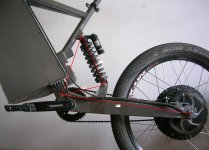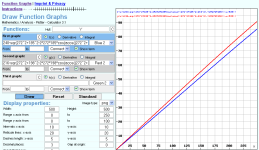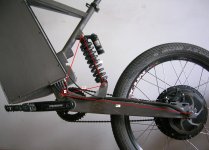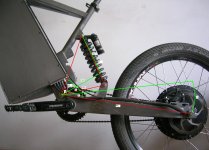The hub motors are heavy, the unsprung weight of the rear wheel is much more than without a hub motor, so the proper suspension adjustment is not easy. But there are opinions that despite the extra weight it can be set properly and the weight is not a drawback. Today many offroad ebikes are manufactured with heavy hub motors. I suppose it is not the unsprung weight alone that matters, but the ratio of the sprung and unsprung weigths.
I did not find a particular thread for this topic, so I intend to discuss it here and find the best solution for offroad use.
Some questions I think about:
How the shock should be adjusted compared to a bike without hub motor?
Motorcycle shocks are better than bicycle shocks for this purpose?
Which extra features of the shock is useful for better suspension? E.g. high-speed/low-speed compression? Two separate damping settings? ("beginning" and "ending stroke rebound" at Rockshox Boxxer)
Progressive spring?
Did anyone do comparative tests with different rear shocks and different settings?
What are the experiences?
Please give as much technical explanation as possible (can be equations or anything).
I can tell about my experience with RS Kage RC, but I have nothing to compare to:
I found the best is to set the spring preload to zero and increase the damping to more than the usual, because the weight of the wheel pulls out the shock when it moves outwards (not only the spring pushes), so with a lighter damping there was a knock at the end of the rebound. With more damping the rebound seems quite slow, but still better than the end-of-rebound knock. There is also a low-speed compression knob on this shock, I set this to minimal, because my spring rate is 600lbs/in., probably I should change it to a softer one.
Here are some informative videos explaining the suspension features on bicycles:
http://www.pinkbike.com/news/technical-tuesday-fox-dhx-setup-2010.html
http://www.pinkbike.com/news/technical-tuesday-rockshox-world-cup-adjustments-2010.html
http://www.pinkbike.com/news/Tech-Tuesday-negative-spring-air-shocks-2012.html
I did not find a particular thread for this topic, so I intend to discuss it here and find the best solution for offroad use.
Some questions I think about:
How the shock should be adjusted compared to a bike without hub motor?
Motorcycle shocks are better than bicycle shocks for this purpose?
Which extra features of the shock is useful for better suspension? E.g. high-speed/low-speed compression? Two separate damping settings? ("beginning" and "ending stroke rebound" at Rockshox Boxxer)
Progressive spring?
Did anyone do comparative tests with different rear shocks and different settings?
What are the experiences?
Please give as much technical explanation as possible (can be equations or anything).
I can tell about my experience with RS Kage RC, but I have nothing to compare to:
I found the best is to set the spring preload to zero and increase the damping to more than the usual, because the weight of the wheel pulls out the shock when it moves outwards (not only the spring pushes), so with a lighter damping there was a knock at the end of the rebound. With more damping the rebound seems quite slow, but still better than the end-of-rebound knock. There is also a low-speed compression knob on this shock, I set this to minimal, because my spring rate is 600lbs/in., probably I should change it to a softer one.
Here are some informative videos explaining the suspension features on bicycles:
http://www.pinkbike.com/news/technical-tuesday-fox-dhx-setup-2010.html
http://www.pinkbike.com/news/technical-tuesday-rockshox-world-cup-adjustments-2010.html
http://www.pinkbike.com/news/Tech-Tuesday-negative-spring-air-shocks-2012.html





